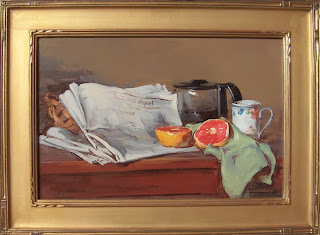 Women in Art II: Preparing to Paint
Women in Art II: Preparing to PaintArtists who painted illuminated manuscripts expressed their love of God. In the Renaissance artists painted for the church, after that for wealthy patrons. Early nineteenth century paintings glorified nature. Late nineteenth century paintings celebrated art for art's sake. The twentieth century focused on the deconstruction and finally the death of painting. The current art of the image is video. End of story. Well not quite. The rise of photography was expected to put an end to painting too. But painting coexists peacefully with photography, as it will with video and digital imaging and whatever else comes next. The question is not will painting survive, but what will the artists paint, and for whom, and what will they have a burning desire to express and glorify and celebrate in the 21st and 22nd and 23rd centuries.....





































